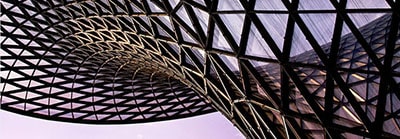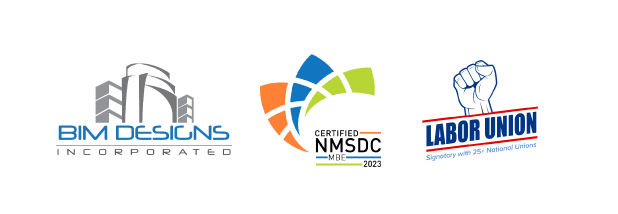
Building Information Modeling: What Does the Industry Do with This New Technology
Building Information Modeling or BIM has been a feature of architectural design in various degrees for around twenty years and has transformed how we go about designing buildings. The ability to construct a building in a highly detailed and realistic model has allowed engineering, architectural, and construction professionals the ability to collaborate in a virtual world rending the final product clash free and ready for construction. Consider some examples of structures that would probably never have been built if BIM had been available at the time of their planning;
· Pittwater High School, Sydney, Australia. Creating a concrete dome – known as a Binishell - seemed like a good idea until it collapsed one day in 1986 due to unexpected weather conditions which made the structure flex excessively and crack.
· Vdara Hotel & Spa, Las Vegas, Nevada. During certain times of the day, the glass fronted structure focused sunlight to become painfully hot on bare flesh, as did the Pier One Playground, New York City, whose metal surfaces could reach well over 110F at certain times of the year.
· Lotus Riverside, Shanghai, China. These eleven tall buildings nearly became real-life domino’s when the end one fell unexpectedly following ground shifts caused by the nearby river.
· Standard Oil Building, Chicago. Designed to be clad with expensive Italian marble, the entire building had to be reworked using an alternative – at a cost of $180 million when the thin marble started to detach.
All of these issues – and many more - would have been picked up in the initial design phase or during collaboration and remedied before construction began had BIM been around.
The Magic of Models.
A thought out and highly detailed model shows the interaction of various trades and the interaction of the building with its environment. Modern architectural tools such as AutoDesk Revit, ARCHICAD, and Chief Architect are able to apply realistic physical attributes such as mass, material strength, and toughness to structural and cladding materials to demonstrate what may happen in real-world applications. That means the architect can simulate the weight of materials used as cladding under the effects of certain damaging conditions such as high wind, earthquakes, and torrential rain. They can examine the ongoing situation with waterways and how the foundation of a building could become undermined. Since physical elements such as light are predictable, the likelihood of the suns rays being collected and reflected back by certain surfaces can be accurately mapped and tested for safety long before construction begins.
So, if CAD-driven BIM can do so much, is there a way forward for the process, or have we reached the limits of what it can do for us? Well, there are already murmurings in the industry of BIM 2.0, and that promises to be a huge leap forward rather than just a few steps.
What is BIM 2.0?
In a nutshell, BIM 2.0 is an interactive version of what we have now, but that doesn’t really describe the possibilities for this new and exciting platform. Think of it in terms of the internet; the original web was a series of static pages that held information which browsers could view. Fairly soon, this became Web 2.0, which allowed users to collaborate with each other and produce their own content. On a similar basis, BIM 2.0 is potentially as ground-breaking as that!
BIM 2.0 uses a new idea called ‘generative design’, which takes away the human designer and allows the computer to do the hard work. Provided a computer system has been given a set of rules and parameters that govern the design of a building, it could theoretically be left alone to complete a design all by its self, potentially doing a better job than a human designer.
If that sounds scary or even slightly unlikely, consider the design of computer chips, which have been the product of self-governing specialist programs for some years now. The sheer complexity of computer chip design has been given over to automation so as to be able to pack so much power and functionality into something so small as a silicon wafer. Chip designers freely admit that they don’t understand a lot of what is generated by the programs, but that is of little consequence when the end result works so well! The programs used to construct this advanced architecture are similar to CAD programs and simply follow pre-programmed rules that allow the software to take whatever course it sees fit the complete the work.
While building design is not anywhere near as complex as computer chip design, that fact that automated design could lead to less issues like some of those mentioned above makes the prospect enticing. Bill Allen, a building design lecturer from the AutoDesk University is convinced that this is a positive step forward. “Computers” he says “are going to be able to design things so much more efficiently than humans can”.
Computing New Designs.
Allen and many others associated with building design see computers as being far more capable than human designers, and less prone to expensive mistakes, thereby making the construction process cheaper and more efficient in the long run. But there are other potential advantages too, not least being the possibility of computers generating exciting new designs which their human controllers have never even dreamed of. The possibility of designs which are highly innovative, smart, and less of a burden on the environment are an intriguing notion.
One of the criticisms of current architectural design is that designers are reticent to explore the extents of architecture because of the inherent cost in creating a building, and thus, what we see as the evolution of building design – and BIM along with it – progresses slowly. Sure, there have been some fine examples of innovative and outlandish designs but they are few and far between. Of course, just because a design is startlingly different from others, it doesn’t mean that it's necessarily better than accepted designs.
Driving Further Change.
As we sit and breathe, BIM is becoming a bigger driving force in building design. While BIM is originally defined as a means to amass information about a building design to manage the construction and ensure that all bases are covered, it has evolved to become the byword for the digital revolution which is creating smart buildings. We now use BIM to plan buildings which have the ability to use resources in the most effective way and ensure that they are able to incorporate new technology. But the future of BIM is likely to involve even closer ties with how a building is actually constructed while ensuring that it incorporates the latest trends in connectivity and energy conservation.
This is an enormous leap forward. BIM has the potential to go even further and can pave the way for building designs which change their characteristics in response to local conditions, and make the most of changes in climate, sunshine levels, wind-speeds, and so forth. The auto-dimming of windows, the funneling of airflow over turbines, the auto-installation of defenses in the event of flooding, and the regulation of solar panels to optimize the capture of sunlight are all distinct potentials in the exciting future for BIM. BIM Designs Incorporated has been used as an expert resource in the industry since 2016. If you enjoyed reading this content we have plenty more on the subject of Building Information Modeling.

About the Author
Mark, CEO, joined the BIM Designs team with over 10 years of experience working with Silicon Valley tech companies in product management, business development, mergers and acquisitions, and CxO roles. Mark leads the growth, strategy and execution of the company; his acute ability to develop and implement strategic processes that scale the company's capabilities drives efficient service delivery, increases client satisfaction, and builds cross-functional teams.





